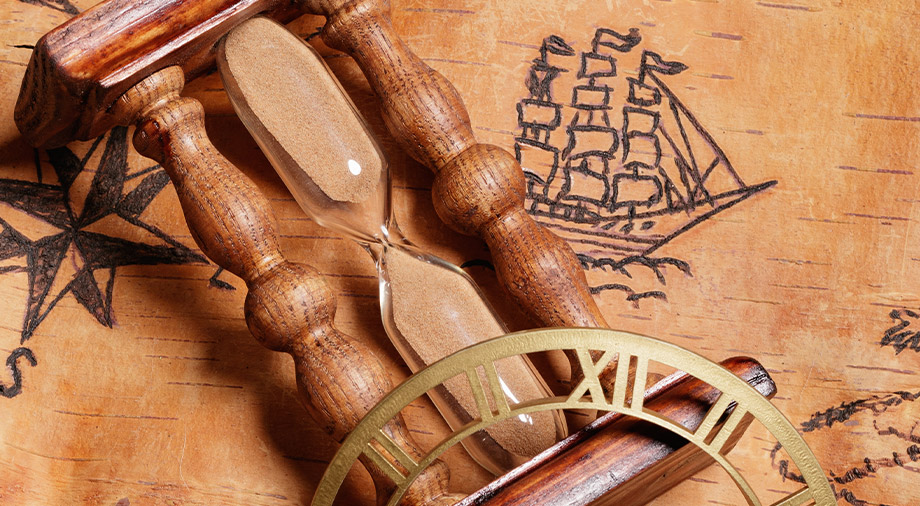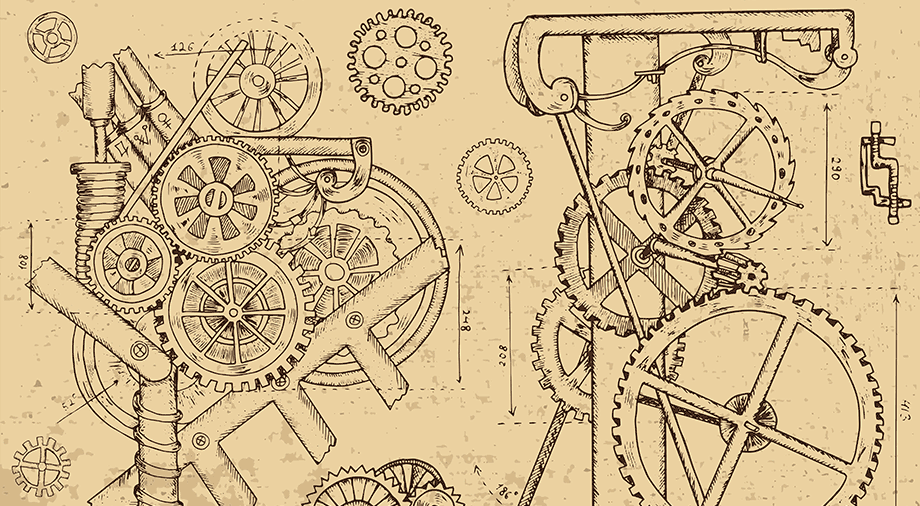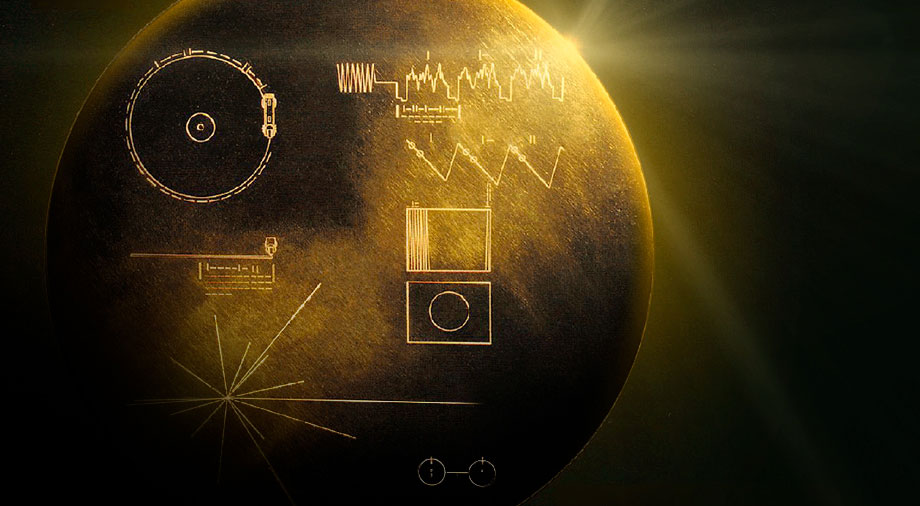The collapse of the Western Roman Empire in 476 CE dealt a major blow to technological thought and innovation, but it didn’t kill it off completely. Many engineers and scientists were forced to deal with new realities and often work in anonymity as a result of persecution by the church.
Despite the challenges, engineering thought was able to overcome the Dark Ages and, at the end of the Renaissance, even emerged as the full-fledged science of classical mechanics. This article is about the inventions and discoveries that preceded this process.
Improvement in navigation technology
The first ship rudders, which allowed pilots to change a ship’s course from the stern, came about in Roman times. The improvement of this Roman technology in the Middle Ages was the first pintle and gudgeon rudders, which used the axial rotation of a cylindrical peg piece (pintle) inserted into a hole (gudgeon) attached to the rudder feather below the ship’s waterline, and on the other, brought to the stern in the form of a steering lever. These rudders appeared as a response to the constant increase in the size of medieval ships, and they performed well even when steering large carracks and galleons.

The first images of these rudders can be found in 12th-century church manuscripts. The invention of the stock-and-swivel rudder is not attributed to a single person, but it became the most successful and most commonly used combination of rudder technologies known since antiquity.
Devices using the pintle and gudgeon principle survive in one form or another to the present day. In particular, we see them in wagon and trailer hitches, bicycle handlebars, and even in the design of controlled solid fuel engines (the plug-pin is lowered and comes out of the mouth of the engine, allowing one to direct thrust).
The ship’s rudder, once perfected, would become the most influential technology of the late Middle Ages and, at the dawn of the 14th and 15th centuries, would usher in the beginning of the Age of Discovery, about which many books would later be written. However, in order for all these books to be published, the printing press had to be invented first.
The Birth of Printing
All printing is based on xylography, a technology of imprinting text from a painted wooden board with protruding letters onto a fabric or paper surface. Before the imprint, a text or image was carved on a wooden block, which was then covered with ink or paint. The prepared block was applied to paper or fabric, pressing it down. Using the press, the ink deposited on the block was printed on paper, making it quite easy to make many identical copies of text and images.
The first mention of woodcuts is found in ancient China in the 2nd century AD. The rise in popularity of Buddhism required an increase in the circulation of sacred texts, which had been copied in monasteries using the block printing technique for many centuries. The oldest printed memoir of that time that has come down to our time is the Diamond Sutra, a religious treatise discovered by researcher Mark Aurel Stein in a cave near Dunhuang, China in 1907.

Currently kept in the archives of the British Library in London.
Around 1040, Bi Sheng invented movable printing, a technology that greatly accelerated the process of replicating paper documents. Shen’s innovation to use compact movable type, which was engraved on rotary dies (signets). After more than a hundred years, these print matrices will be used in China to print the first money (during the Song Dynasty, around 1161 CE). It would, however, be another 300 years before the appearance of the first printing press in Europe.
The printing press of the German inventor Johannes Gutenberg, which appeared in the 1440s, was the quintessential printing technology of its time. This manually-operated machine used an improved technology for transferring text from movable type to paper. To do this, Johannes Gutenberg reimagined the technology of the screw press, which at that time was used in the production of flax, wine and paper.
In addition to the improved press mechanism, Gutenberg’s machine was innovative in how it cast letters through the use of a printing matrix, a metal plate with indentations in place of letters, into which he poured an alloy of tin, lead, and antimony. The printed matrix made it possible to cast entire pages of the finished text and significantly increased the speed of printing books, significantly reducing the cost of this process.

Presumably, it was financial motive that prompted Gutenberg to create his printing press. Ironically, the desire to monetize his idea led to the loss of its offspring. His original printing press was confiscated as a result of a lost lawsuit to repay loans. Johannes Fust, Gutenberg’s colleague in the printing business who originally sponsored his production, subsequently sued to take his former colleague’s machine tool, as well as the entire set of metal printing matrices and letter blocks, as compensation for the outstanding debt. Records of the world’s first printing press end with an inventory of all the property from Gutenberg’s workshop.
The religious texts and theological treatises that dominated printing press output at the time of Gutenberg’s invention were gradually matched by secular and scientific publications. It was the wide distribution of books that allowed scientists, researchers, and inventors from all over the world to exchange information and develop the scientific theories of their predecessors.

The invention of the printing press caused a real revolution in the processes of organizing social life and the preservation and transmission of information. It was the development of printing technology that made it possible to significantly reduce the cost of producing books, making them available to a wider range of people. This, in turn, drove a gradual increase in the level of literacy and education of the inhabitants of the Old World.
Mechanisms for observing space and time
One of the first hourglass models in medieval Europe appeared in a monastery in Chartres, France around the 8th century. The mechanism was created by a monk named Liutprand. The technology of timekeeping with the use of sand poured between identical glass flasks was known even in the ancient Roman Senate. Senators used hourglasses to ensure that speakers would have equal, consistent time for their speeches.
However, until the early 14th century, hourglass technology was not widely used. The dawn of the golden age of seafaring gave new life to hourglasses, when clocks began to appear on most ships. The reason was that sea roll had minimal effect on the correct operation of the watch, although direct control of timekeeping (supervision of bulb overturns and fixing time intervals in the logbook) still required a lot of effort from the crew. The hourglass also had other disadvantages, in particular, the error in measuring time, which increased in proportion to the life of the watch. With constant friction, the grains of sand at the base of the watch were ground off, and the glass neck through which they passed, on the contrary, expanded.
In the 11th century, the Buddhist monk Su Song (1020-1101), who lived in China during the Han Dynasty, developed a clock mechanism with a water armillary sphere. It was able to measure the passage of astronomical time and display the location of stars observed in the circle of the horizon. It used the uniform interval flow of water as its mechanism to measure time.
To carry out his idea, Su Song constructed a clock tower with a water armillary sphere at its top. Hidden at the base of the Su Song tower was a wooden wheel 3.35 meters (11 feet) in diameter, with 36 ladles attached to its rim. The ladle bowls were provided with a continuous supply of water from a special reservoir. The water level in the tank was always fixed in order to provide a constant pressure to the jet, which in practice increased the accuracy of the movement of the mechanism.
The sphere acted as an analogue of a three-dimensional cosmic dial, which could provide information about the mechanical movement of the celestial spheres (orbis coelestis). Thus, Su Song’s water tower possessed not only the prototype of one of the first clock mechanisms, but also an interactive map of space objects, which made it possible to calculate their coordinates without directly observing them.

Despite the destruction of Su Song’s astronomical water clock, it was his mechanism that served as the prototype for the first mechanical clocks that began to appear in Europe by the end of the 13th century. The most famous surviving examples of these clockworks are those of Salisbury Cathedral, which is first mentioned in 1384. The clock was powered by a verge escapement, the first known mechanical escapement, which was driven by two small counterweights.

The clock in Salisbury most likely did not have a dial, and time intervals were measured by striking the bell. It was the invention of the verge escapement that paved the way for the appearance of the first fully mechanical watch, but it still remains a mystery who exactly invented it.
The history of the development of medieval mechanisms and engineering is, for the most part, the history of the preservation and development of ancient technologies that had already existed. The development of real technological innovations was outlined only at the beginning of the Renaissance, when humanity, in addition to an empirical understanding of the physics of natural processes, had a strong theoretical base, largely due to the development of mathematics.





